How to Manage Filler Complications as an Aesthetic Practitioner
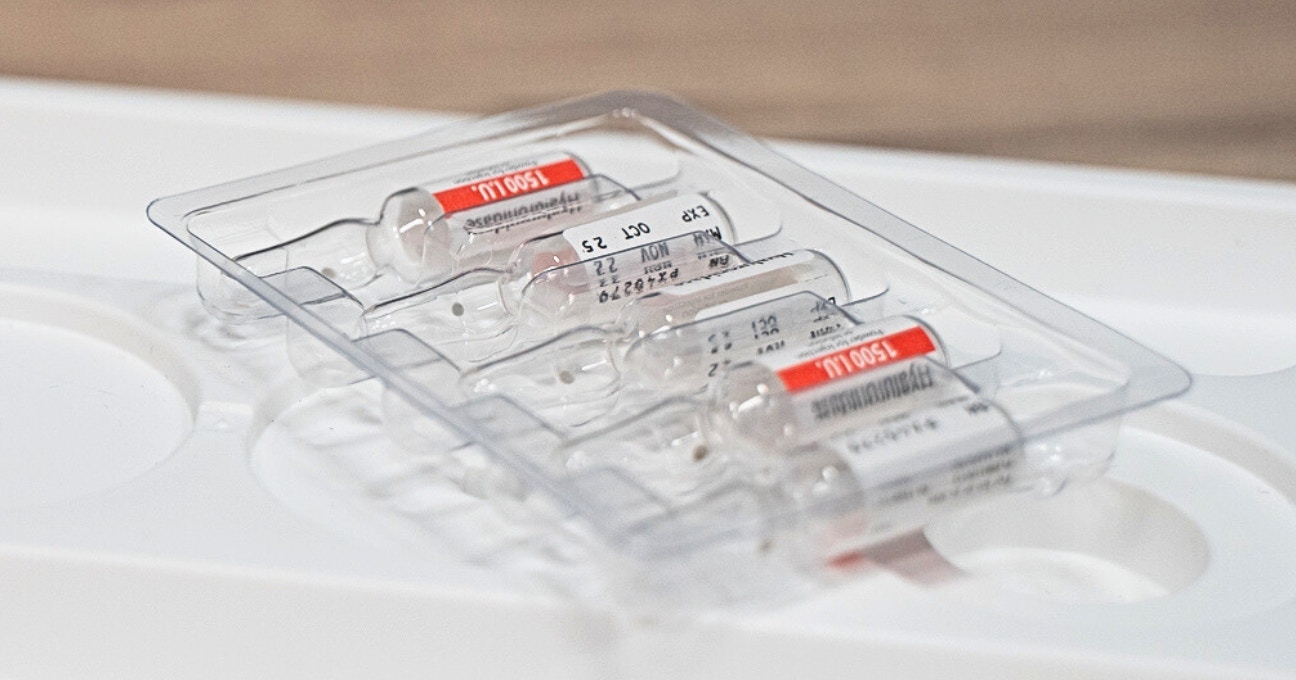
It’s hard to confidently learn how to manage filler complications as an aesthetic practitioner. This is largely because adverse events are rare. Therefore, you can’t undergo practical training as such.
Practical learning involves having patients with complications available for treatment. As such, aesthetics training around preventing and managing filler complications is generally theoretical.
You can boost your confidence in managing complications by continually updating and refreshing your knowledge. This includes regularly reviewing your emergency protocols and, as renowned expert Dr Tapan Patel recommends, conducting drills. More on this below…
We spoke to Dr Max Greenfield, a clinical trainer at Harley Academy and full-time cosmetic doctor, about a range of filler complications. Here he explains a number, detailing what they are, plus how to minimise the risks and manage these situations, should they arise.
Read on to update your knowledge and gain some action points to improve your preparedness!
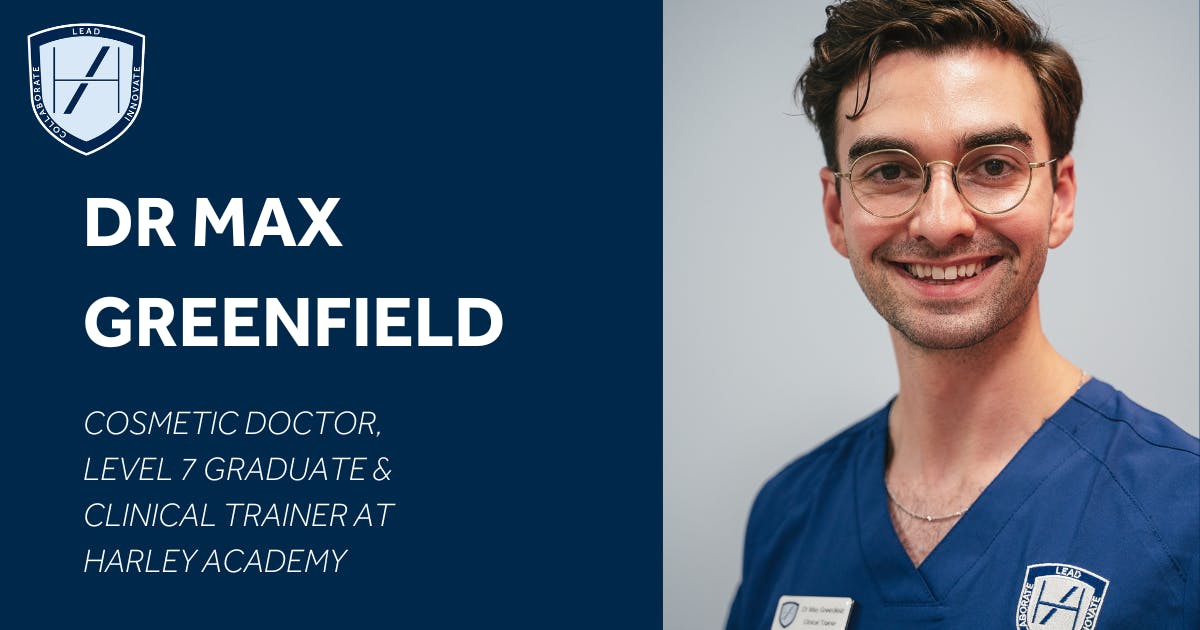
1. Bruising from filler injections
Bruising is probably the most frequently seen complication, it’s certainly far more frequently seen than the other scenarios we’ll discuss below.
“Bruising is a common reaction after filler injections,” notes Dr Max. “Although not harmful, this can be a source of anxiety to your patients. Whilst evidence for the effectiveness of over-the-counter medications, such as arnica supplements or topical creams is limited, they may help to reduce the appearance of bruising.
“Use of concealer can also be helpful,” he notes. Adding, “But, as with any arnica cream, this shouldn't be applied on the day of treatment to help reduce the risk of infection.”
How long does bruising last after filler treatments?
“Small bruises will usually disappear within the first few days whilst more significant bruises can last up to two weeks.”
Practical tip to minimise the likelihood of bruising from filler injections
Dr Max counsels, “You may want to consider using a cannula rather than a needle for treatment.”
You may also consider ice packs applied to the skin pre-treatment.
Aftercare advice for reducing the risk of bruising after fillers
“Advise your filler patients to avoid the following for 24 hours post-treatment,” says Dr Max:
- Strenuous exercise
- Alcohol
- Ibuprofen
- Blood thinning medications (unless prescribed)
- Any activities that cause flushing of the face, such as steam rooms and saunas.
You can read more in our Injectors Guide to Filler Aftercare Advice.
Psychological consideration
“Reassure your patients that, although frustrating, bruising is temporary,” he recommends. “Bruising doesn't affect the treatment outcome and will improve with time”.
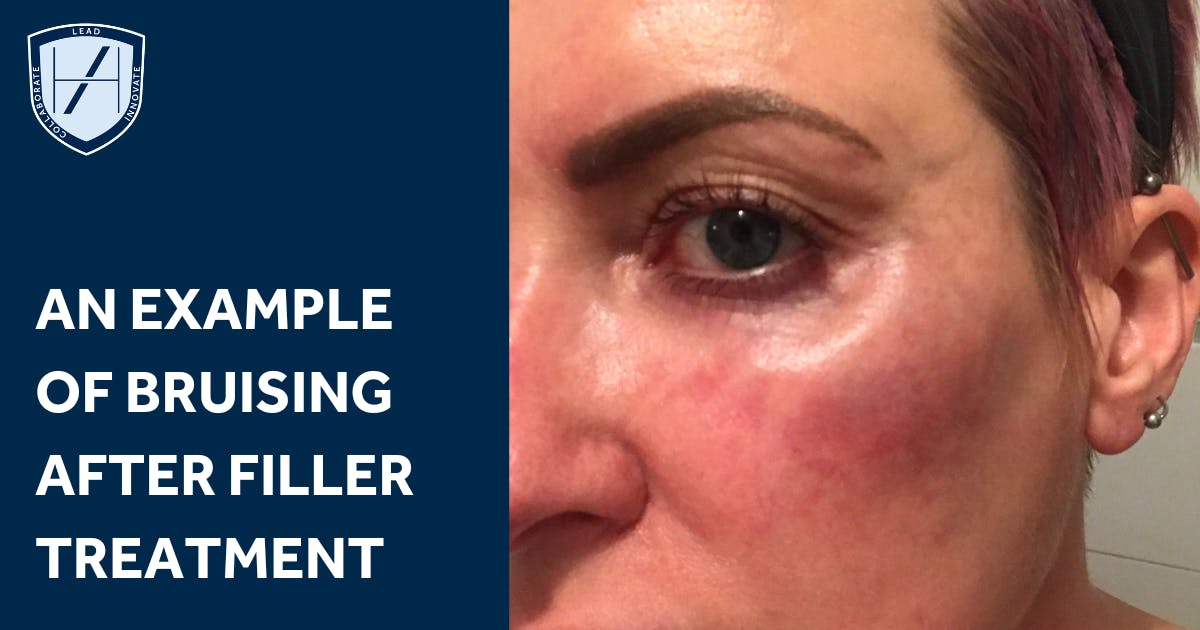
2. Nodules and Lumps
“Filler lumps can occur if the filler is unevenly distributed or placed too superficially,” states Dr Max. “Gentle massage straight after the treatment by the aesthetic practitioner can help smooth out the area. If lumps persist, hyaluronidase can be injected to dissolve any
hyaluronic acid-based fillers.”
“Nodules are a little more complicated and can be either inflammatory or non-inflammatory,” he warns.
“Some will resolve spontaneously within a few weeks. However, you may need to prescribe antibiotics to the patient if there are signs of inflammation. These can include redness and warmth around the area. Also, consider dissolving the filler.
“If you’re struggling with the management of nodules it's usually best to refer to a clinician who has experience dealing with more complex complications. Referring them to someone who can use ultrasound to assist with their diagnosis and treatment would be ideal.
“If there’s significant swelling of the area, a short course of oral steroids can sometimes be used for symptomatic relief.”
Practical tips for aesthetics practitioners on reducing the risk of filler lumps and nodules
Dr Max advises that, to avoid lumps, you “make sure that you're using the correct product in the correct layer and palpate the filler after the treatment to ensure that it's evenly distributed.”
“For nodule prevention, make sure you’re using an aseptic non-touch technique throughout. Be sure to take a full medical history to ensure your patient is well prior to treatment.”
Psychological consideration:
“Although lumps are resolved fairly easily, nodules can take quite a bit longer and require multiple clinic visits. This can take a psychological toll on both you and your patient,” highlights Dr Max.
“It's important that, if you feel out of your depth, you seek help from your complications management group for the benefit of both you and your patient.”
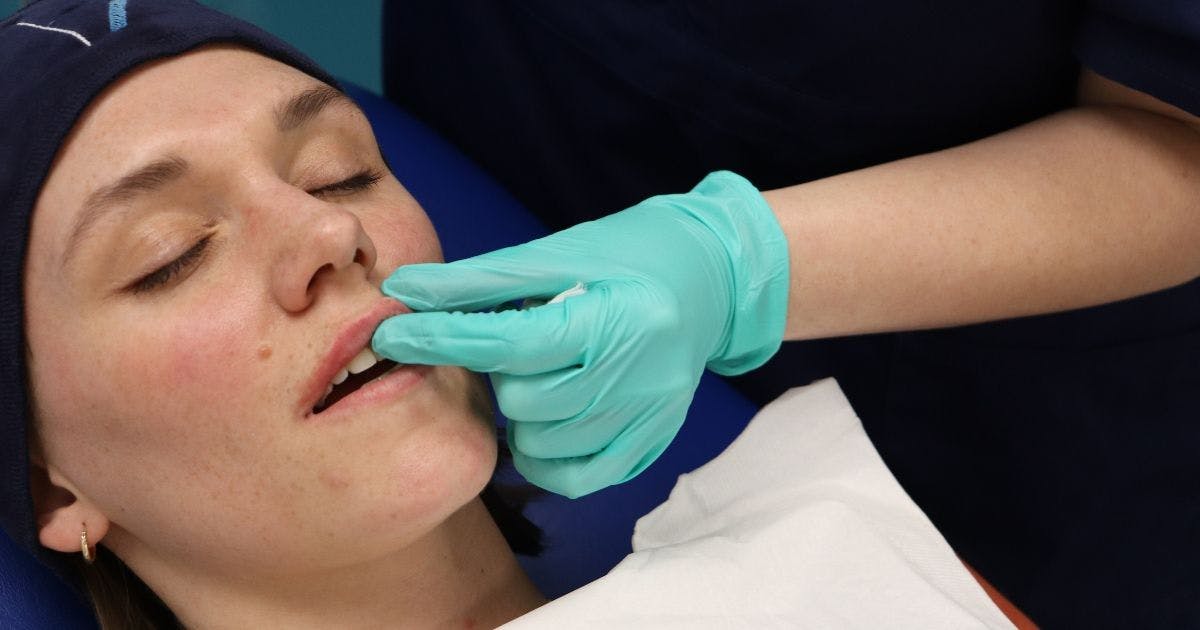
3. Infection
“Infections, although rare, can occur,” states Dr Max. “Particularly, if an aseptic non-touch technique isn't maintained during the procedure or aftercare isn't followed by the patient.”
What are the signs of post-filler infection and how long do they take to present?
“Symptoms include redness, warmth, pain and swelling in the area,” he confirms. “In the case of a filler-associated abscess, you may also be able to feel a fluctuant swelling.
“Signs of infection usually present between 2-3 days post-treatment, though there can be some variability.
How do you treat infection after filler treatments?
Dr Max advises, “Antibiotics are the first line treatment although, if this is failing to resolve the infection, dissolving the source may be required. As always, if you don't feel comfortable doing this yourself, it's really important to refer your patient on as soon as possible to someone who’s experienced in doing this.
“For an abscess requiring drainage, referral to a hospital may be required for further imaging and surgical drainage.”
How long do post-filler infections take to resolve?
“Simple infections usually resolve within 2 weeks,” Dr Max informs us. Adding, “More complex infections can take longer to recover from.”
Practical tip for reducing the risk of infection for your filler patients
“There are lots of things you can do to reduce the risk of infection. Maintaining an aseptic non-touch technique is the most important. Also, I cleanse the treatment area at least three times prior to treatment,” he shares.
“Also, make sure your patient is clear on the aftercare advice and that they have a written copy of this to refer to. Include your emergency contact details with this. Be clear on how to contact you in the event of a complication.
“It's also useful prior to the treatment to ensure that they are available to come for review for at least a week after the treatment. This way, in the case of infection, it can be managed quickly.”
A further worthwhile action point is to include consenting to emergency care in your general treatment consenting process. This way, you can manage any complications efficiently with no delays, should they arise.
Psychological consideration when managing infection in filler patients:
“This type of situation can be particularly stressful for both you and your patients,” Dr Max empathises.
“Ensure you provide lots of reassurance and follow up with them regularly. Seek additional support early if you are finding complications management challenging. These things are always best done with experienced colleagues.”
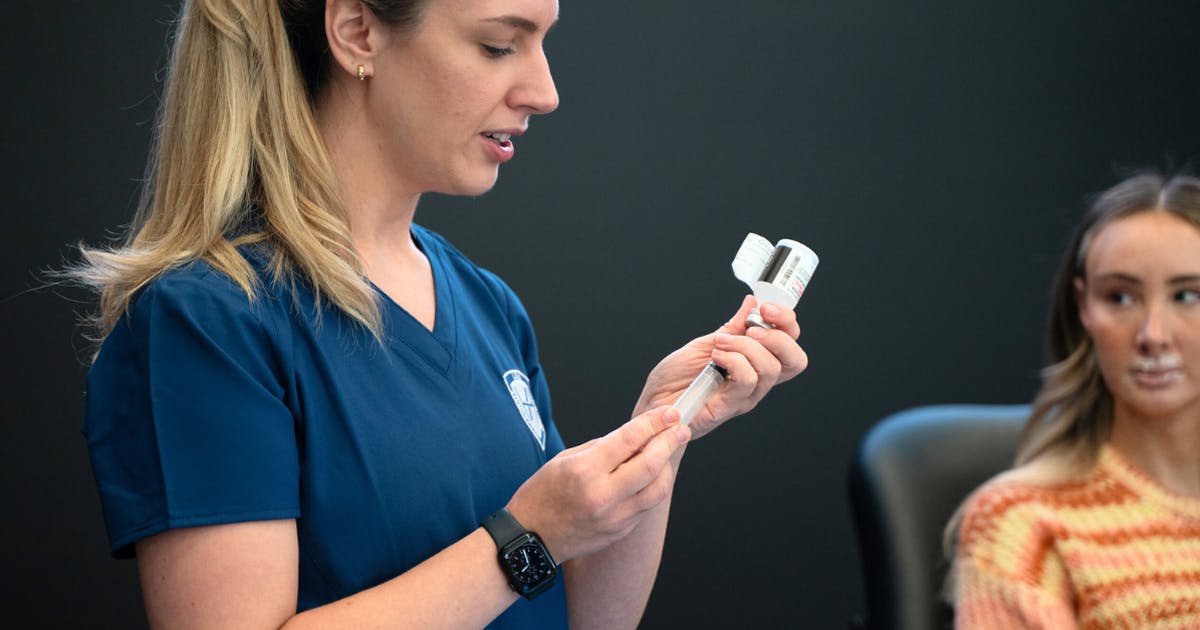
Having a support network readily available is invaluable
Establishing who you can refer patients to for specific concerns is something all aesthetics practitioners need to do. Whether that’s for complications management or simply treatments that are outside your competency.
Given the stress that can be involved in complications management, you’ll certainly need a reliable support network then.
You may not only require practical support, but emotional support can be extremely useful too. Having solid colleagues you can rely on to help you reflect on your treatment and management of situations can be comforting. It’s also a useful way to learn and share your experiences so you can all learn from each other.
If you’re a sole aesthetic practitioner looking to expand your network, we recommend the following…
- Keep in touch with people you meet during your aesthetics courses
- Attend seminars, conferences and industry events - and don’t be afraid to talk to people!
- Join networking programmes and platforms such as Comma where you can ask for advice and assistance
- Form a WhatsApp group with local aesthetic medicine colleagues for the specific purposes of being available to assist with any complications.
Do remember, however, that a phone call is often the quickest way to contact someone in emergency scenarios.
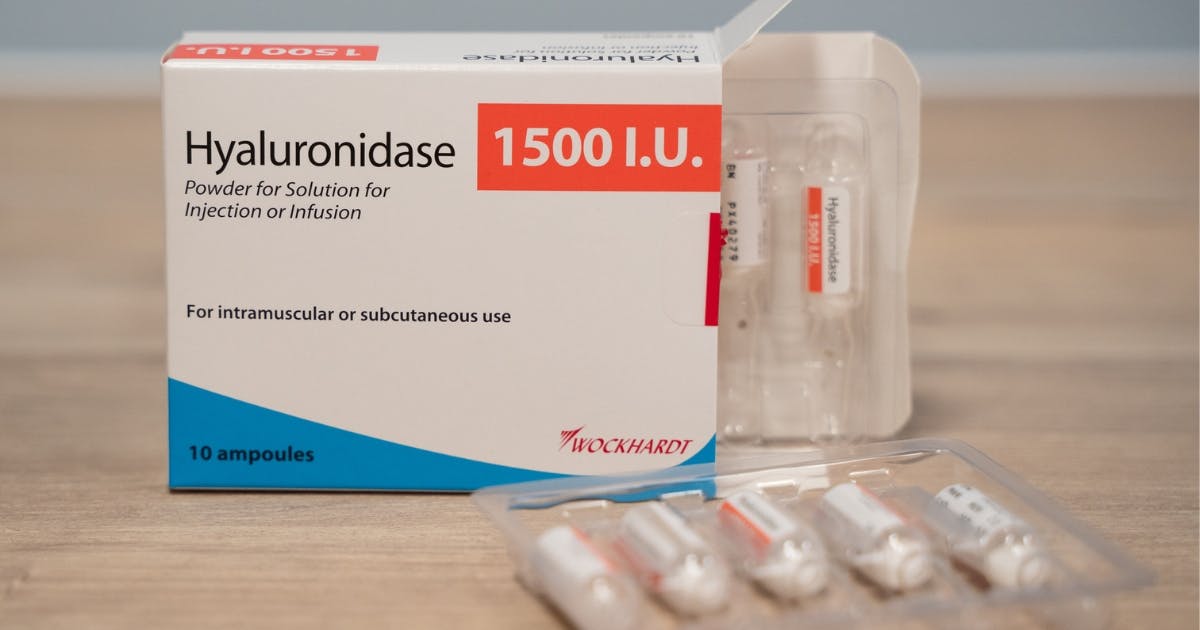
Implementing regular complications reviews and drills
Whether you’re a sole aesthetics practitioner or work for a clinic, you must ensure you’re fully prepared to address any complication.
Not only do you need to be ready in theory, practical checks are also crucial and can frequently be overlooked.
Aesthetics complications reviews: recommended preparatory steps
- Regularly reviewing your emergency protocols to make sure they’re up to date
- Check that the contact details for colleagues and/or local hospitals you may need to refer patients to are correct. Also regularly check if their availability has changed in case you need to add additional contacts to your emergency list
- Read through your insurance policy so you’re aware of the obligations you have in this regard. You can then add these to your review checklists
- Sign up to mailing lists for complications groups so you receive regular updates
- You can review the Complications topic in the Aesthetic Medicine Articles section of our website for regular advice and teaching points
- Routinely check your emergency kit to ensure relevant stock is present, in date and available in sufficient quantities - prepare for a worst-case scenario
- Undertake specific complications training - often online courses for aesthetics practitioners, detailing best practice for common scenarios. These can provide valuable resources for you to refer back to
- Run regular emergency complications drills, at least once every 6-12 months, to maintain your knowledge of and confidence in:
- a) Reconstituting hyaluronidase for specific indications - it’s not the same for all uses!
- b) Do you know where your emergency supplies are kept? Hyaluronidase, needles and medications such as epi-pens, for example.
- c) Do you have the number of anyone you may need to refer on to, to hand?
The better prepared you are, the more seamlessly any complications management scenario will be. You and your patient will obviously still be nervous - this is entirely normal - but knowing you’re well-prepared, organised and have everything you need to hand, can help you to remain calm.
Take steps now to minimise any unnecessary frustrations during emergency situations, so you’ll have - and provide - a better experience.
All information correct at the time of publication
Download our full prospectus
Browse all our injectables, dermal fillers and cosmetic dermatology courses in one document
By submitting this form, you agree to receive marketing about our products, events, promotions and exclusive content. Consent is not a condition of purchase, and no purchase is necessary. Message frequency varies. View our Privacy Policy and Terms & Conditions
Attend our FREE open evening
If you're not sure which course is right for you, let us help
Join us online or in-person at our free open evening to learn more
Our Partners












STAY INFORMED
Sign up to receive industry news, careers advice, special offers and information on Harley Academy courses and services


